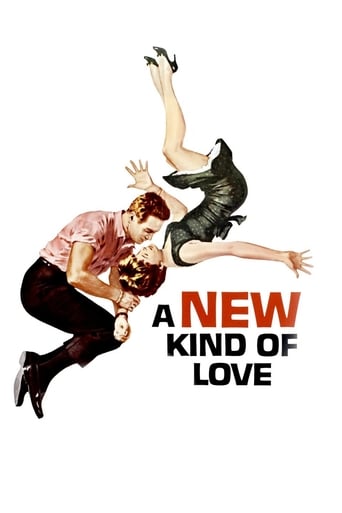Syl
Joanne Woodward and Paul Newman were definitely made for each other on screen and off screen. This movie stars two of Hollywood's greatest actors. Paul and Joanne were a couple off screen as well. They play two cynical adults who meet and fall in love under unusual circumstances in Paris, France. Joanne's character is a feminist who would like romance with a man. She is a fashion business woman and Paul plays a sports writer. They meet in Paris under strange circumstances and end up falling in love. Joanne's character goes unrecognizable when she spends an afternoon at an Elizabeth Arden Spa. She is a new woman of Paris and pretends to be a Parisienne like Felicienne (played by Eva Gabor). Paul and Joanne have a good time playing unlikely partners in love. The scenery, art direction, and costumes by the legendary Edith Head add to the film's aesthetic. Thelma Ritter, George Tobias, and Eva Gabor are first rate supporting players. Thelma Ritter is a scene stealer with an old crush on her employer.
sctwilm
We have another suspect in the death of the studio system, if "A New Kind of Love" is what passed for comedy in the early 1960s. Despite the star power in the cast, the spectacular wardrobes and the Parisian locations, this film was the biggest dud I've viewed in a long time. Mel Shavelson was an old-time comedy writer who wrote for some of the biggest stars, but the culture seems to have passed him by by 1963. The dialogue is painfully incoherent, trying desperately for laughs instead of logic. As others have observed here, the characters are unmoored from any motivational continuity, and the script instead relies on stereotypes and farcical slapstick. What a huge disappointment. Thank goodness Paul Newman will be remembered for his triumphs, and not for this dross.
Shannon
Okay, so it's not an art piece, a great classic, or a stellar example of brilliant film- making. But does every movie have to be? This movie is cute, charming and clean (especially when compared to the most of the filth being made today). Paris looks gorgeous, as do Paul Newman and Joanne Woodward, and the haute couture fashions are to die for. Sometimes you're just in the mood for something light and frothy, where you don't need to think, analyze or criticize. This movie is ideal for that purpose. I particularly enjoyed the witty comments in the opening credits regarding the fashions used in the picture. While not worth running out and buying (although thanks to my husband and an Amazon wish list accident I do now own the DVD), it would certainly be worth watching if it ran on TV, or even renting if you have a particular fondness for this era, or these actors.
Greg Couture
When the credits for this one began to roll, accompanied by Frank Sinatra's jazzy update of the standard with the same name as this film's title (and which sounds like an arrangement by Sinatra's frequent and best collaborator, Nelson Riddle, who is, unaccountably, not listed in the credits), I thought I was in for a treat. An attractive cast; top-notch professionals behind the camera; Errol Garner adding his matchless pedigree to the musical scoring; gowns by some of the most renowned Parisian couture houses; plus the participation of several of that era's purveyors of upscale chic; and, finally, Joanne Woodward in a title sequence (designed by George Cukor's frequent visual consultant, Hoyningen-Huene, also listed as this film's color coordinator) surreptitiously snapping photos of the window displays of Manhattan's most expensive retailers. Ah, but what a disappointment followed.To start, the script is surprisingly and tastelessly lacking in wit; the promised Paris locations are, for the most part, studio recreations; Paramount, by the time of this production, was no longer using its high-quality 70mm VistaVision process for most of its "A"-list productions; and the stars, Joanne Woodward and Paul Newman, were never so thoroughly sabotaged by ridiculous plotting, rarely funny dialogue, and the rather listless direction of Melville Shavelson. And Miss Woodward had also to endure some particularly unflattering hair styles by George Masters, including an ugly platinum wig she was required to wear in several key scenes. (I mean, she can look great as a platinum blonde! Just check out 1960's "From the Terrace.")There are a (very) few positive attributes, though. Eva Gabor lends a touch of much-needed glamor, as a character named Felicienne (Now there's a name that suits her!); Marvin Kaplan does his usually reliable shtick as the hero's sidekick/schlemiel; and Thelma Ritter, given pitifully little to do, survives this disaster with her fan base intact. But then, toward the end of the proceedings, Maurice Chevalier is dragooned into a seemingly interminable reprise of the music hall hits with which he had long been associated, in a scene where a bevy of females go into paroxysms of ecstasy over his supposedly irresistible Gallic charm. So it finally became apparent why, during the credits, Lanvin and Scandinavian Airlines System, among others, preferred their part in these proceedings to be described as "with the somewhat horrified participation of..." They must have been given a look at a rough cut of this mish-mash before the final release prints were readied. Quel abomination!



